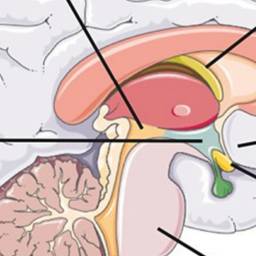[1]
Bridgeman MB,Abazia DT, Medicinal Cannabis: History, Pharmacology, And Implications for the Acute Care Setting. P
[PubMed PMID: 28250701]
[2]
Zias J,Stark H,Sellgman J,Levy R,Werker E,Breuer A,Mechoulam R, Early medical use of cannabis. Nature. 1993 May 20;
[PubMed PMID: 8387642]
[3]
McPartland JM,Agraval J,Gleeson D,Heasman K,Glass M, Cannabinoid receptors in invertebrates. Journal of evolutionary biology. 2006 Mar;
[PubMed PMID: 16599912]
[5]
Romero-Sandoval EA,Kolano AL,Alvarado-Vázquez PA, Cannabis and Cannabinoids for Chronic Pain. Current rheumatology reports. 2017 Oct 5;
[PubMed PMID: 28983880]
[6]
Sohler NL,Starrels JL,Khalid L,Bachhuber MA,Arnsten JH,Nahvi S,Jost J,Cunningham CO, Cannabis Use is Associated with Lower Odds of Prescription Opioid Analgesic Use Among HIV-Infected Individuals with Chronic Pain. Substance use
[PubMed PMID: 29338578]
[7]
Morano A,Fanella M,Albini M,Cifelli P,Palma E,Giallonardo AT,Di Bonaventura C, Cannabinoids in the Treatment of Epilepsy: Current Status and Future Prospects. Neuropsychiatric disease and treatment. 2020;
[PubMed PMID: 32103958]
[8]
Badowski ME, Yanful PK. Dronabinol oral solution in the management of anorexia and weight loss in AIDS and cancer. Therapeutics and clinical risk management. 2018:14():643-651. doi: 10.2147/TCRM.S126849. Epub 2018 Apr 6
[PubMed PMID: 29670357]
[9]
Abi-Jaoude E,Chen L,Cheung P,Bhikram T,Sandor P, Preliminary Evidence on Cannabis Effectiveness and Tolerability for Adults With Tourette Syndrome. The Journal of neuropsychiatry and clinical neurosciences. 2017 Fall;
[PubMed PMID: 28464701]
[10]
Nielsen S,Germanos R,Weier M,Pollard J,Degenhardt L,Hall W,Buckley N,Farrell M, The Use of Cannabis and Cannabinoids in Treating Symptoms of Multiple Sclerosis: a Systematic Review of Reviews. Current neurology and neuroscience reports. 2018 Feb 13;
[PubMed PMID: 29442178]
Level 1 (high-level) evidence
[11]
May MB,Glode AE, Dronabinol for chemotherapy-induced nausea and vomiting unresponsive to antiemetics. Cancer management and research. 2016;
[PubMed PMID: 27274310]
[12]
Calignano A,La Rana G,Loubet-Lescoulié P,Piomelli D, A role for the endogenous cannabinoid system in the peripheral control of pain initiation. Progress in brain research. 2000;
[PubMed PMID: 11098711]
[13]
Castellano C,Rossi-Arnaud C,Cestari V,Costanzi M, Cannabinoids and memory: animal studies. Current drug targets. CNS and neurological disorders. 2003 Dec;
[PubMed PMID: 14683467]
Level 3 (low-level) evidence
[14]
Rodríguez de Fonseca F,Del Arco I,Martín-Calderón JL,Gorriti MA,Navarro M, Role of the endogenous cannabinoid system in the regulation of motor activity. Neurobiology of disease. 1998 Dec;
[PubMed PMID: 9974180]
[15]
Gómez R,Navarro M,Ferrer B,Trigo JM,Bilbao A,Del Arco I,Cippitelli A,Nava F,Piomelli D,Rodríguez de Fonseca F, A peripheral mechanism for CB1 cannabinoid receptor-dependent modulation of feeding. The Journal of neuroscience : the official journal of the Society for Neuroscience. 2002 Nov 1;
[PubMed PMID: 12417686]
[16]
Di Marzo V,Melck D,Bisogno T,De Petrocellis L, Endocannabinoids: endogenous cannabinoid receptor ligands with neuromodulatory action. Trends in neurosciences. 1998 Dec;
[PubMed PMID: 9881850]
[17]
Nallapaneni A,Liu J,Karanth S,Pope C, Pharmacological enhancement of endocannabinoid signaling reduces the cholinergic toxicity of diisopropylfluorophosphate. Neurotoxicology. 2008 Nov;
[PubMed PMID: 18765251]
[18]
Pandey R,Mousawy K,Nagarkatti M,Nagarkatti P, Endocannabinoids and immune regulation. Pharmacological research. 2009 Aug;
[PubMed PMID: 19428268]
[19]
Mouhamed Y,Vishnyakov A,Qorri B,Sambi M,Frank SS,Nowierski C,Lamba A,Bhatti U,Szewczuk MR, Therapeutic potential of medicinal marijuana: an educational primer for health care professionals. Drug, healthcare and patient safety. 2018;
[PubMed PMID: 29928146]
[21]
Hartman RL,Brown TL,Milavetz G,Spurgin A,Gorelick DA,Gaffney G,Huestis MA, Controlled Cannabis Vaporizer Administration: Blood and Plasma Cannabinoids with and without Alcohol. Clinical chemistry. 2015 Jun;
[PubMed PMID: 26019183]
[22]
Volkow ND,Baler RD,Compton WM,Weiss SR, Adverse health effects of marijuana use. The New England journal of medicine. 2014 Jun 5;
[PubMed PMID: 24897085]
[23]
Curran HV,Freeman TP,Mokrysz C,Lewis DA,Morgan CJ,Parsons LH, Keep off the grass? Cannabis, cognition and addiction. Nature reviews. Neuroscience. 2016 May;
[PubMed PMID: 27052382]
[24]
Joshi M,Joshi A,Bartter T, Marijuana and lung diseases. Current opinion in pulmonary medicine. 2014 Mar;
[PubMed PMID: 24384575]
Level 3 (low-level) evidence
[25]
de Graaf R,Radovanovic M,van Laar M,Fairman B,Degenhardt L,Aguilar-Gaxiola S,Bruffaerts R,de Girolamo G,Fayyad J,Gureje O,Haro JM,Huang Y,Kostychenko S,Lépine JP,Matschinger H,Mora ME,Neumark Y,Ormel J,Posada-Villa J,Stein DJ,Tachimori H,Wells JE,Anthony JC, Early cannabis use and estimated risk of later onset of depression spells: Epidemiologic evidence from the population-based World Health Organization World Mental Health Survey Initiative. American journal of epidemiology. 2010 Jul 15;
[PubMed PMID: 20534820]
Level 3 (low-level) evidence
[26]
Blanco C,Hasin DS,Wall MM,Flórez-Salamanca L,Hoertel N,Wang S,Kerridge BT,Olfson M, Cannabis Use and Risk of Psychiatric Disorders: Prospective Evidence From a US National Longitudinal Study. JAMA psychiatry. 2016 Apr;
[PubMed PMID: 26886046]
[28]
Beaulieu P,Boulanger A,Desroches J,Clark AJ, Medical cannabis: considerations for the anesthesiologist and pain physician. Canadian journal of anaesthesia = Journal canadien d'anesthesie. 2016 May;
[PubMed PMID: 26850063]
[30]
Crippa JA,Derenusson GN,Chagas MH,Atakan Z,Martín-Santos R,Zuardi AW,Hallak JE, Pharmacological interventions in the treatment of the acute effects of cannabis: a systematic review of literature. Harm reduction journal. 2012 Jan 25;
[PubMed PMID: 22273390]
Level 1 (high-level) evidence

